How To Remove Skin Tag On Eyelid Effortlessly!
Ensuring a clear and comfortable gaze, bringing all eyes on you.
On Oct 1, 2023 – 11 minutes read
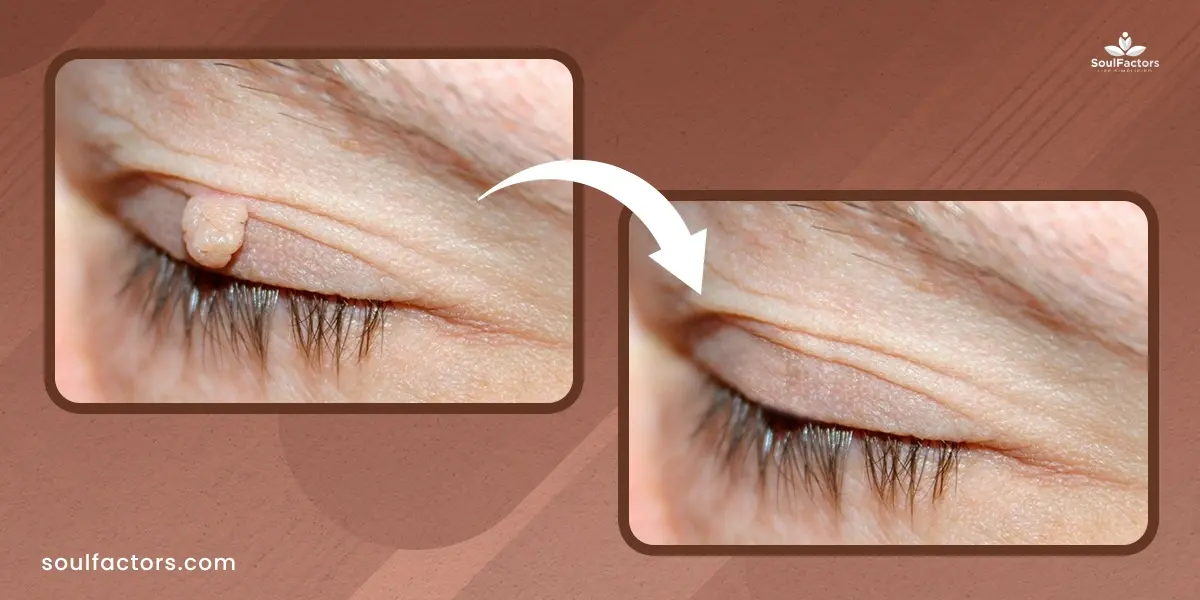
Skin tags, scientifically known as acrochordons, are benign skin growths that tend to commonly develop in areas of increased skin folding or frequent friction. Eyelids are one of the most common sites where such tags tend to develop, possibly due to the creases. Here, you’ll find expert guidance on how to remove the skin tag on the eyelid effectively.
Usually, living with skin tags does not pose any danger to your health — they often require no treatment and tend to dissolve on their own. But in case these growths are a cause for discomfort, several solutions are available to nip the problem in the bud. Here’s a comprehensive guide on how to remove skin tags on eyelids which includes various home remedies, over-the-counter products, and surgical options available.
What Causes Skin Tags On Eyelids and How To Remove Skin Tags On Eyelids?
While the exact cause of skin tags is not known, usually they occur as a result of extra growth of cells in skin folds or areas that rub together frequently.
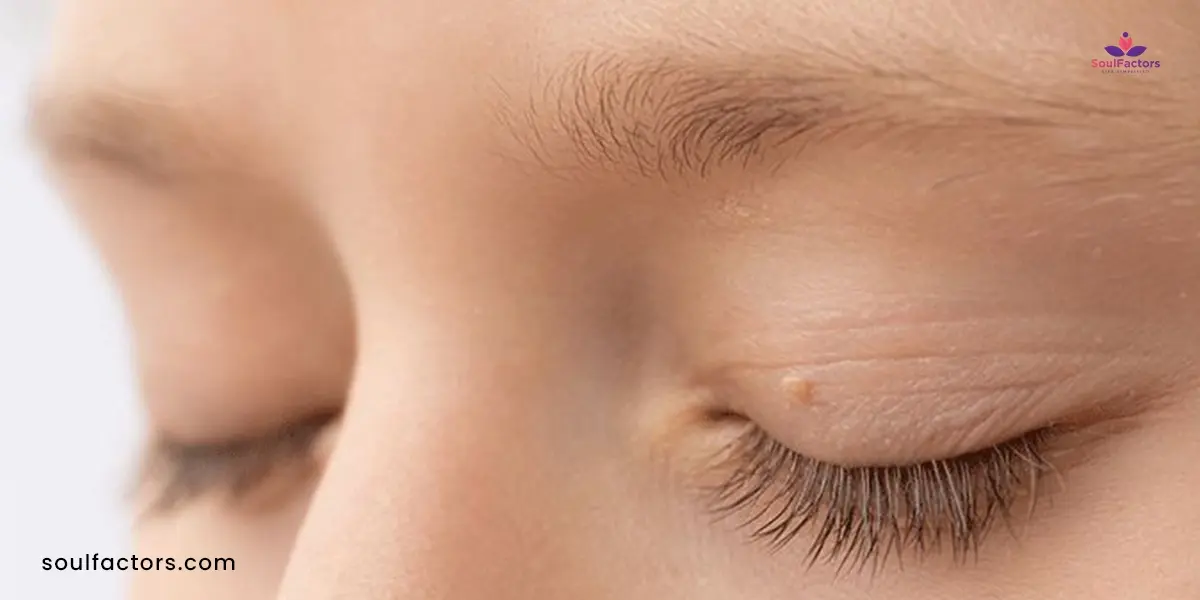
It is also possible for some individuals to be genetically predisposed to developing skin tags. Research shows that one or more of the factors below can also contribute to the growth of skin tags:
Factors That Contribute To The Growth Of Skin Tags
1. Those who are overweight or clinically obese carry a higher risk of developing skin tags due to additional friction.
2. With age, one is more likely to develop skin tags.
3. Hormonal changes during pregnancy or menopause can also accelerate the development of skin tags on your eyelids. Such tags tend to disappear on their own.
4. Medical conditions such as abnormally high levels of lipid profile, hypothyroidism, and Type 2 diabetes can also increase the risk of eyelid skin tags.
5. Those with a family history of skin tags are more likely to develop them.
6. There could be a relationship between certain strains of HPV and the appearance of skin tags.
And what happens if you don’t get rid of the skin tags? Usually, skin tags are harmless. Even though they may appear on your eyelids, they don’t affect your vision. However, in some cases, the skin tags on eyelids can be a cause of concern:
- If they completely or partially block your vision, especially if they are located on the eyelid’s edge
- If they cause irritation every time you open your eyes
- If they prevent you from shutting your eyelids completely
- If there is pain, swelling, and redness
In most cases, no tests are required to confirm the diagnosis of a skin tag on your eyelid. However, moles or warts can also appear on your eyelid which may be cancerous. In case your physician/dermatologist suspects any other condition, they may take a sample of the growth for biopsy.
How To Remove Skin Tags On Eyelid
In the world of dermatological issues, there are various skin problems, including textured skin, the occurrence of skin tags, etc. Textured skin is a regular problem that many of us have. Sometimes, it affects more than just the face. It can happen anywhere from the forehead to the toes, including the sensitive area of the eyelid where skin tags can form. Most people get rid of skin tags by allowing them to fall off naturally. But if you need a Swiffer solution, here are some home remedies and surgical options you can check out.
A. Skin Tag On Eyelid Removal At Home
How to remove skin tags on eyelids at home is one of the frequently asked questions on the internet. Wondering how to remove skin tags in one night? In that case, you may be better served by in-office procedures as home remedies take a longer time to work. Moreover, such remedies have their fair share of side effects and do not work as well as medical procedures performed by qualified technicians.
Here are some commonly suggested home remedies for removing skin tags on your eyelid:

1. Tea Tree oil
Tea tree oil is well known for its antifungal properties. Once you wash the affected area on your eyelid, apply the oil to the skin tag using a Q-tip. Cover your eyelid with a light bandage overnight. Repeat the process for 4 to 5 days till the tag dries and falls off.
2. OTC Skin Tag Removal Kit
There are kits available at drugstores that come with ligation bands. You need to wrap the skin tag with the band to cut off blood circulation, prompting them to naturally fall off. But note that there are very few kits approved by the FDA that pose a serious question about their effectiveness and safety. Here are some potential side effects you may encounter:
- Scarring
- bleeding
- Infection
- Improper or incorrect removal
- Skin damage
3. Vitamin E
Some recommend massaging Vitamin E oil, an antioxidant, on your eyelid to get rid of skin tags around your eyes. While there is no solid evidence to show how antioxidants address the tags, they combat oxidative stress which may accelerate the growth of benign cells.
4. Apple Cider Vinegar
How to remove skin tag on eyelash line? Soak a ball of cotton in 2 tablespoons of apple cider vinegar. Apply it to the skin tag and cover with a cotton gauge for 30 mins. Rinse the area thoroughly. Repeat until the tag dries and falls off. The acidic properties of apple cider vinegar help to break down the extra growth of cells/tissues (1).
5. Minced Garlic
Garlic is well-known as an anti-inflammatory. Applying a spoonful of minced garlic on the skin tag helps to break it down. However, as is the case with most home remedies, the scientific evidence supporting the efficacy of garlic for skin tag removal is scant.
6. Removal Creams
Most creams come with their own usage instructions. You need to wipe the area with an alcohol wipe and apply a thin layer of the cream over the skin tag. You can expect the skin tag to dry and fall off within 2–3 weeks. Make sure to avoid products containing salicylic acid and tea tree oil as it can increase irritation and cause contact dermatitis.
7. Iodine
There is anecdotal evidence that suggests liquid iodine can be useful for removing skin tag from your eyelid. However, the scientific evidence is limited. To try this, apply a thin layer of petroleum jelly on the area around your eyelid. Use a Q-tip to apply iodine on the skin tag and cover with a bandage until dry. Keep repeating the process every day until the tag falls off.
Risks Of Using Home Remedies To Remove Skin Tags
1. Improper sterilization or technique can cause infections, especially given the sensitivity of eyelids
2. There is an enhanced risk of scarring, impacting the aesthetic appearance of your face
3. Incomplete removal can lead to regrowth of skin tags
B. How To Remove Skin Tag On Eyelid: Dermatologist-Approved Methods
Is that annoying skin tag on your eyelid keeping you awake at night, leaving you wondering, “How to remove a skin tag on the eyelid safely?” The good news is that dermatologists can help you out. There are several safe and effective ways to remove skin tags on eyelids. Here are some of the most common methods a vast majority of dermatologists recommend:
1. Ligation
Ligation involves tying an elastic band around the skin tag. Doing so cuts off the blood supply, enabling the skin tag to harden and fall off on its own. Ligation is considered a safe and effective therapy for skin tag removal, especially for sensitive areas like the eyelid. Even though skin tag removal bands are available over-the-counter, it is best to defer to a professional for the procedure.
2. Cryotherapy
Cryotherapy involves the use of liquid nitrogen. As liquid nitrogen is extremely cold, it helps to freeze the cells of your skin tag. (2)
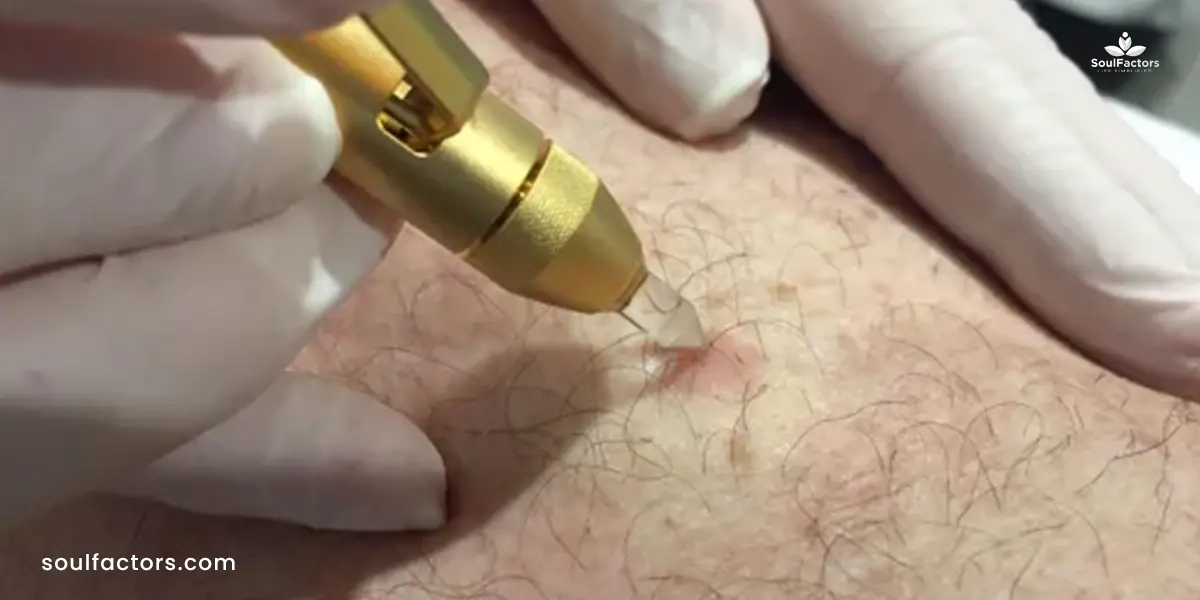
It results in the tag darkening and eventually falling off within a week or two. It is touted as one of the quick and effective options for anyone looking for an easy way to remove skin tags on eyelids.
3. Electrocautery
Electrocautery can be useful to remove smaller skin tags on your eyelids. As the name suggests,an electrical probe burns the skin tag at its base by hitting it with electrical current. Usually, you can get rid of the skin tag in a single sitting, making it convenient and safe. Moreover, it not only eliminates the skin tag but also seals the wound, reducing the chances of infection or bleeding.
4. Surgery
In some cases, removal of skin tags from the eyelid may not be possible without surgery. Typically, these are the tags that are larger in size and/or are located in an extremely sensitive area where the other methods cannot be used. Surgical removal of skin tags involves application of local anesthetic to numb the area. Your dermatologist will use either a scalpel or scissor to remove the skin tag from its base. In case of any bleeding, electrocautery can be used.
5. Expert Guidance
Sometimes skin tags can disappear on their own. But for some, a visit to a dermatologist can bring a quicker solution. They can ensure complete removal without exposing you to the added risk of any side effects. Attempting these procedures at home to get rid of skin tags without professional supervision can lead to complications, regrowth, bleeding, and infection. Dermatologists not only have the training but also access to sterile products to get rid of skin tags effectively.
So if the skin tag on your eyelid is bothering you and you want to address it right away, dropping at a dermatologist’s office is the best option. They can take a closer look at it and decide which removal method works best for you. Not every method works for everyone. Also keep in mind that skin tag removal procedures may induce slight discomfort. In most cases, local medication is administered to ensure optimal comfort.
Unsure about the cost of removing skin tag from your eyelid? While prices vary depending on the location and dermatologist, the average cost can be anywhere depending on USD 100 to USD 300 for every session. Surgery tends to be more expensive compared to the other methods. But note that most insurance companies classify skin tag removal as a ‘cosmetic’ procedure. So, you won’t be able to raise a claim under your insurance policy should you opt for any in-office treatment.
What Is The Fastest Skin Tag Remover?
How to remove skin tags on eyelids swiftly? For that, you need to opt for a medical procedure that a dermatologist can perform. You can opt for cryotherapy, ligation, or surgery. Cryotherapy is the fastest way to remove skin tags on the eyelids, followed by surgery.
Ligation involves tying off the skin tag’s base with an elastic band, cutting off its blood supply. Over a few weeks, the tag hardens and eventually falls off. Though not as immediate as the previous methods, ligation is still a relatively quick way to remove skin tags on the eyelids. While these methods are effective, it’s crucial to note that attempting to remove skin tags on eyelids at home without professional guidance can pose risks.
Why is seeking professional help crucial when you’re looking for a foolproof way of how to remove skin tag on the eyelid? The delicate eye area requires careful attention, and improper removal may lead to infections or scarring. Dermatologists are trained to assess the skin, ensuring proper diagnosis and suitable removal methods.
Here’s why seeking professional is important:
👉 Reduces the risk as dermatologists can assess the size, location, and nature of the skin tag and pick the right process to avoid complications.
👉 Dermatologists can ensure effective and safe removal of skin tag without exposing you to any infection or scarring.
👉 These methods also minimize discomfort as local anesthesia is applied.
Conclusion
Unless you are genetically predisposed to developing skin tags, a few lifestyle changes can help you to keep them at bay. This includes an active lifestyle to keep your weight in check, avoiding too much friction around the eye area, and practicing good hygiene.
If you still find those pesky bits showing up, this comprehensive guide above clearly summarizes how to remove skin tag on eyelid in a safe and foolproof manner. Make sure to bookmark this so you know exactly what you need to do.
FAQ
Unfortunately, there is no method that is 100 percent effective in getting rid of skin tag on eyelids naturally. Some people use tea tree oil, apple cider vinegar, or even banana peel to address the growth.
However, given that your eyelid is an extremely sensitive area, be careful before you attempt any natural/home remedy.
Removing a skin tag on your eyelid using a DIY method can be dangerous. It can lead to infection, bleeding, and permanent damage.
Skin tags are generally harmless. Noticing them on various body parts, including your eyelids, is common. Most skin tags do not even require medical intervention and disappear on their own.
There could be several reasons such as increased friction from clothing or excessive rubbing, hormonal changes, obesity, genetics, and insulin resistance.
In most cases, the treatment area forms a scab that eventually falls off.
Once healed, any minor imperfections that may be on your eyelid usually remain inconspicuous to others.
Skin tags are generally harmless. So you can let them be unless you observe changes in their appearance or experience a lot of pain/discomfort.

Subscribe to Newsletter
Elevate your routine, stay on trend, and embrace a personalized beauty journey with our curated insights.


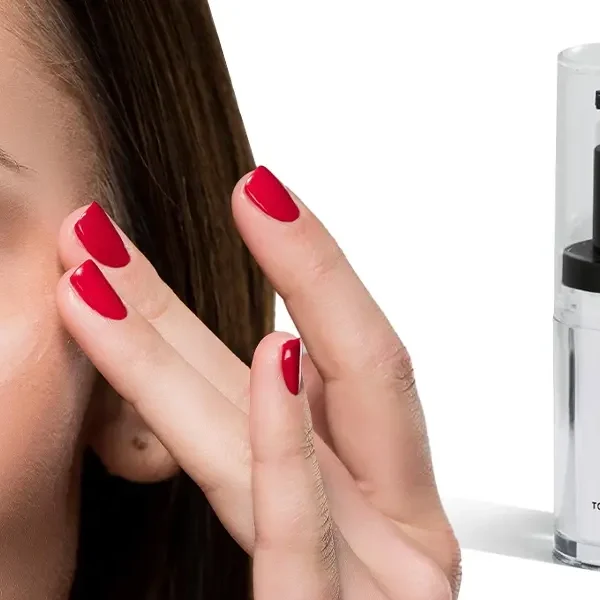


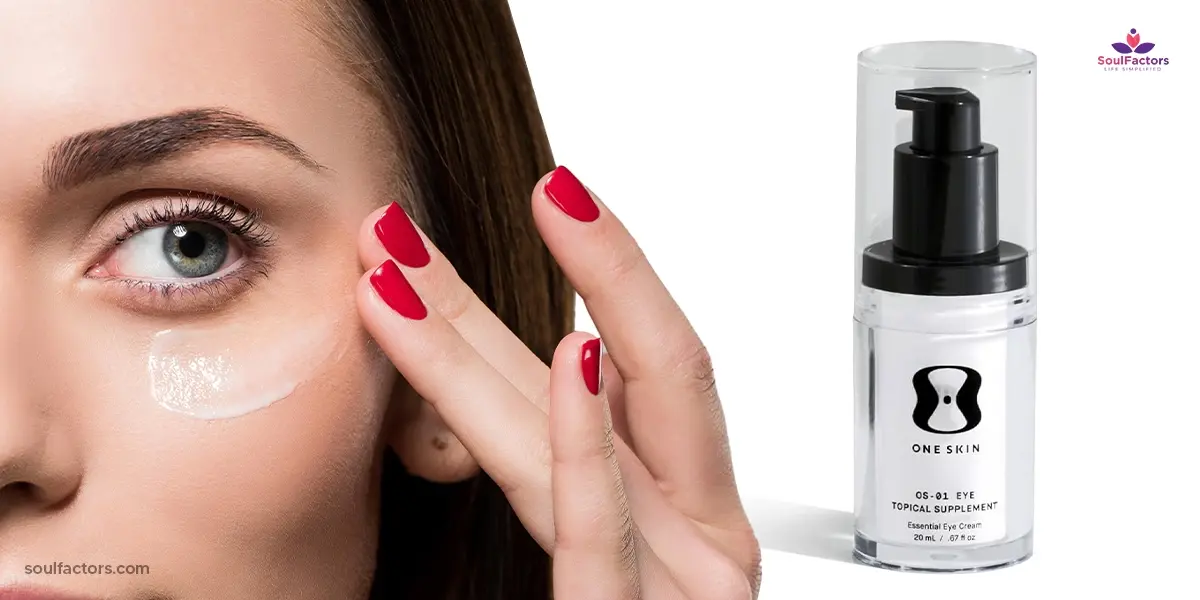
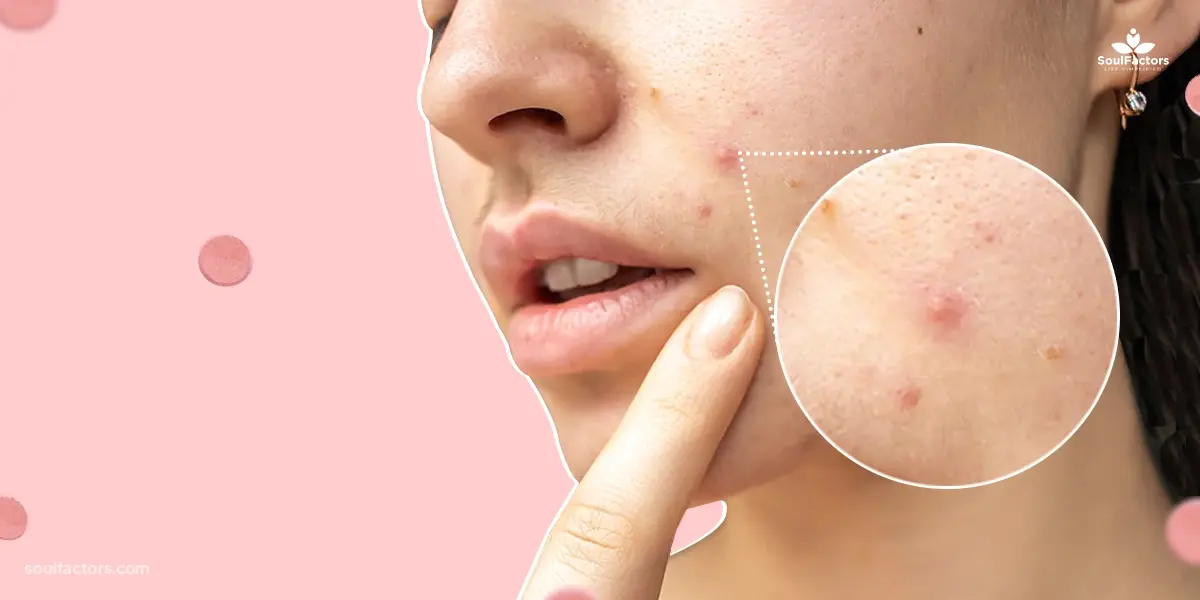
Write a Comment